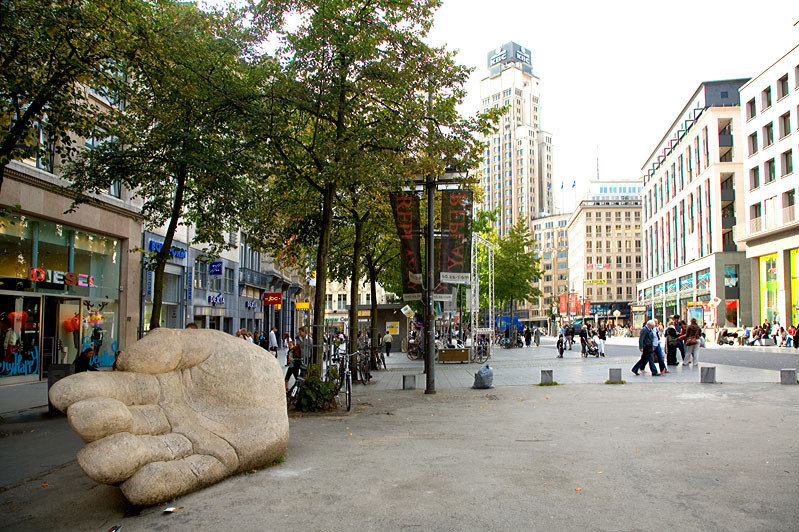Meir: a swamp turned into a shopping center

Today the Meir is the shopping heart of Antwerp, visited by millions of people each year. Around 300.000 people a week visit the Meir, so be sure you’ll never feel alone. Most of the buildings you see there date from the 20th century. Two notable exceptions you will find in the middle part. Both are works of Jan-Pieter van Baurscheidt, the most important architect of the 18th century. He built the Osterriethhouse (currently under restauration) and the so-called Royal Palace, both for the van Susteren family in the middle of the 18th century.
There are many other remarkable buildings a bit further east. For instance the former Tilquin store (nowadays a Massimo Dutti shop) which is a remarkable example of art deco. This is worth a story of its own. So is the ‘Stadsfeestzaal’ (the City Festive Hall) and the buildings Innovation now occupies, that once belonged to Leonard Tietz.
Meir = Moor

The name Meir is like the word moor in English: a wetland, and indeed the most western part of Meir lay lower than the surrounding places, so water gathered there. Until the 12th century the city walls were situated just west of the Meir. When the city started growing in the 13th century, the Meir was turned into a canal with walking space on both sides.
Important people started to settle around the Meir. Among them the Pijpelinckxfamily, traders in tapestry. A grandson of theirs would turn out to be a genial painter: P.P. Rubens.
Gradually the waterway was covered and the city grew further east. In the 19th century the council decided to demolish the old defensive wall. At that moment they also decided to create a new axis of avenues to greet arriving visitors. The first part of the axis was the Leysstraat, the second part the Meir. Until the late ’80s of the 20th century the Meir was full of traffic. After the underground tramway was built the council turned it into a pedestrian area. A real success, taking into account the 300.000 visitors that walk the Meir every week.